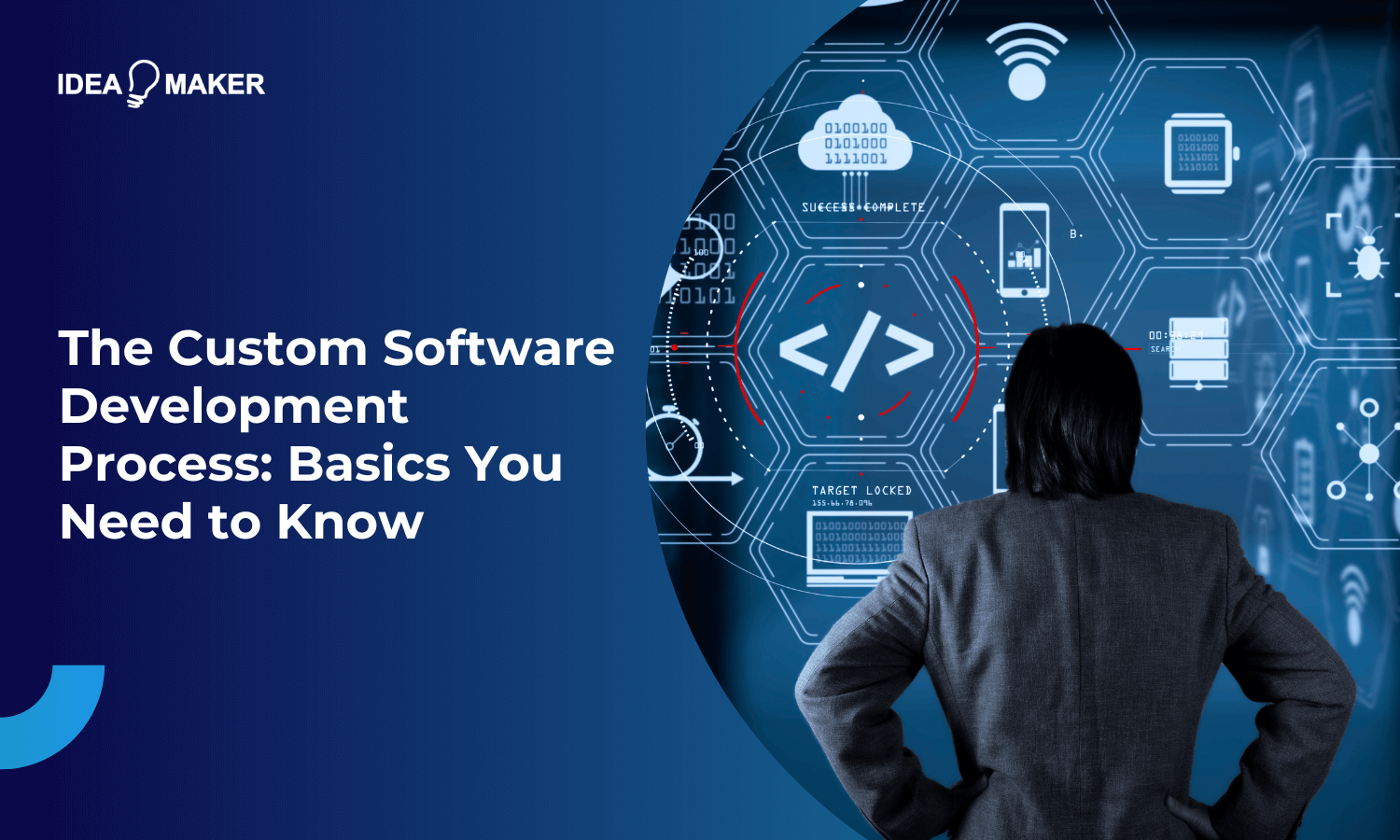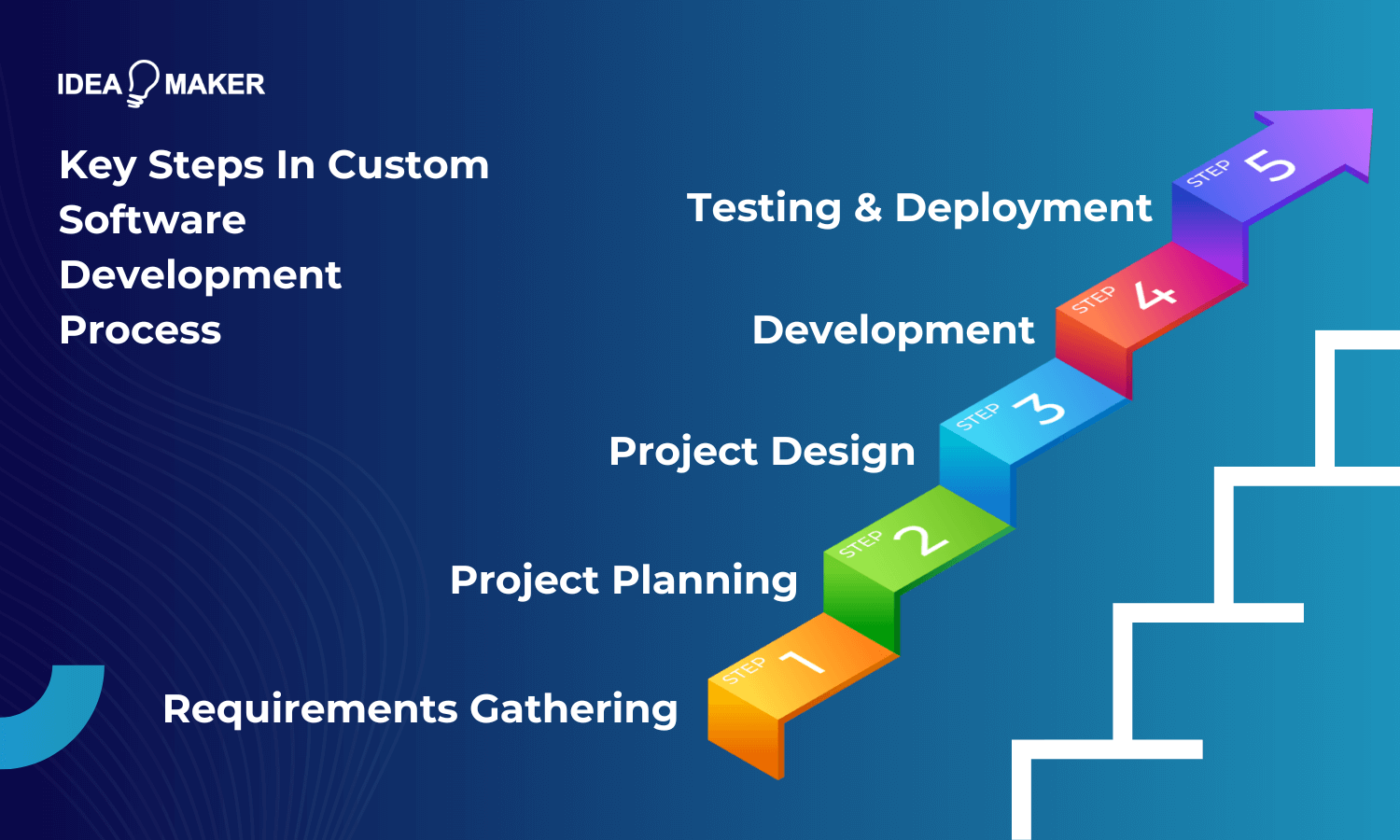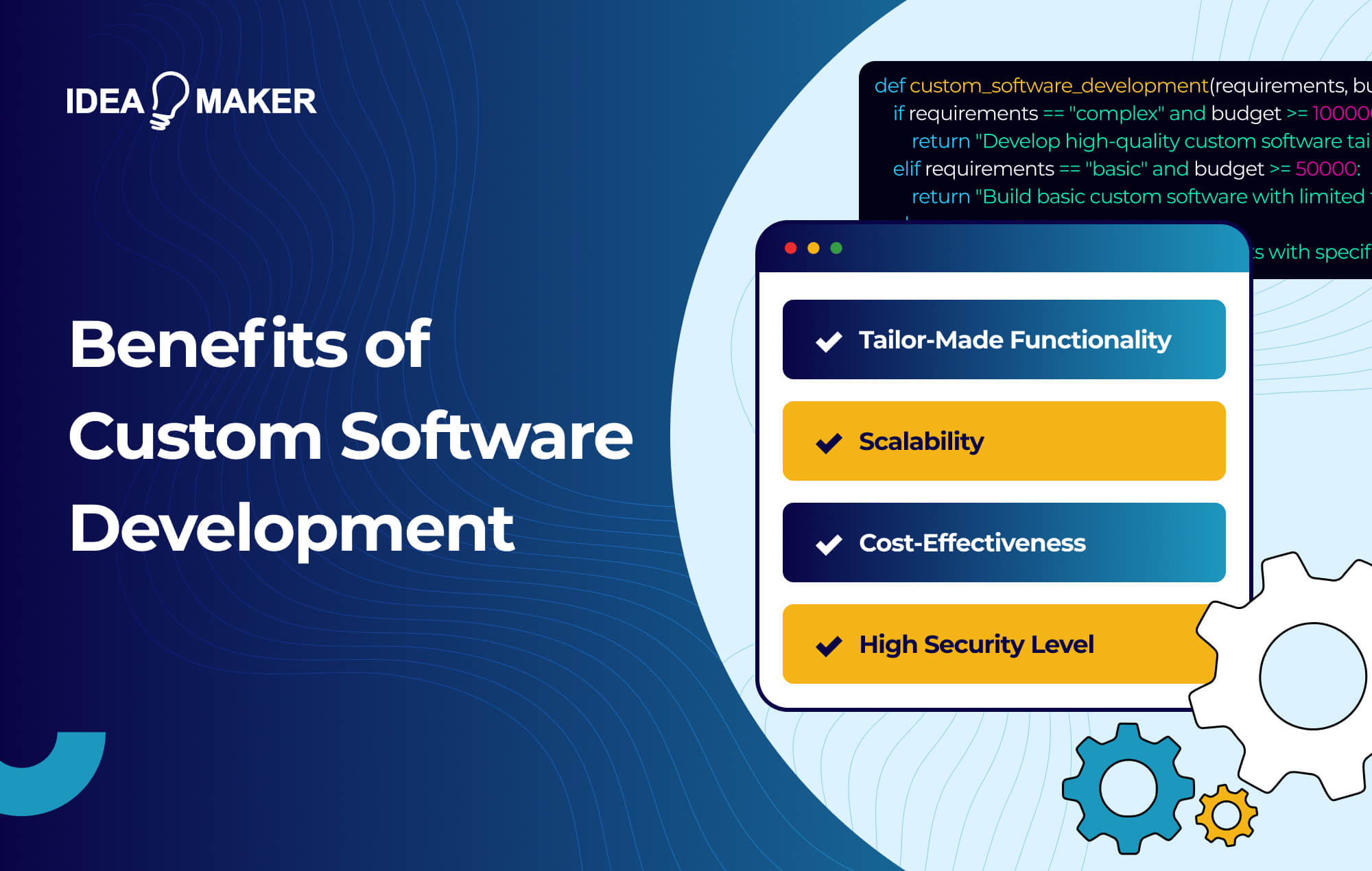Table of Contents
Investing in custom software development can be an intimidating process with many challenging aspects to consider. However, the benefits of custom software, such as flexibility, scalability, and perfectly tailored functionality, certainly outweigh the difficulties involved. As a result, in order to ensure your solution can achieve its full potential, a simple understanding of the custom software development process is essential.
In this article, we explore the process behind custom software development and discuss what should be considered when hiring a custom software development agency. This way, you’ll have all the information you need to confidently get started with your own custom software.
What Is Custom Software Development?
Custom software development refers to the creation of software that’s made from scratch for a specific purpose. The difference between custom and off-the-shelf software is that the latter caters to a wide general audience by featuring broad functionality, while custom software comes with functionality tailored to the needs of the business. This means, with a custom solution, you can avoid unnecessary feature additions that slow the software down and increase costs. To fully understand custom software development, especially for small businesses, it’s important for businesses to thoroughly examine the fundamentals of the development process.
Key Steps In Custom Software Development Process
There are several steps involved in a software development process; understanding and executing them properly is key to a successful development project. These steps are put in place to ensure a smooth and properly guided project that is free from unnecessary errors. Below, we’ve outlined the key components of any solid software development process.
Requirement Gathering and Analysis
As with any quality project, the custom software development process starts with requirements gathering and analysis. This is where your team of developers seek to gain a better understanding of your requirements, expectations, business needs, and business model. Typically, learning about your business’s customers is also on the agenda to ensure the development team can properly tailor functionality to your future user base.
Once all this information is gathered, the development team then spends time analyzing the data and looking for any informational gaps. This process decreases the chance of a misguided development down the road, boosting overall productivity levels.
Planning and Feasibility Study
During the planning and feasibility stage, a project specification is put together, outlining all your requirements and functionality needs. Because the project spec is used by developers and project managers to accurately outline tasks throughout development, this document is usually sent to you for approval before development begins. Failure to accurately outline a project spec ultimately leads to misguided projects.
Beyond its role in project feasibility, the project specification also serves as a dynamic document that adapts to evolving requirements and insights. For example, as development progresses, unforeseen challenges may arise, necessitating adjustments to the initial plan and possibly the budget. In such cases, the project spec becomes a vital reference point for evaluating the feasibility of proposed modifications.
Technical Design and Visual
Once you’re satisfied with the project spec, it’s time to get started designing your project. This two-part phase generally begins with technical design, which involves creating an interactive wireframe that outlines user interface elements, such as buttons, image positions, and input fields, in a simple but interactive way. If done correctly, you’ll be able to test how your software will function and its workflows through the wireframe.
Then, when you’re happy with the technical design, your development team will move on to your project’s visual design. This is where developers marry your brand with functionality, creating a smooth and consistent user experience. If needed, multiple visual design samples can be created for you to choose from.
Development and Coding
After designing the technical and visual aspects of your project, your development team will begin the critical stage of coding. During this phase, lines of code are meticulously crafted to bring the custom software to life. In other words, the vision outlined in the project specifications is transformed into a functional solution.
This phase is typically the most time-consuming, as nearly every aspect of the software must be built from scratch to ensure optimal performance and seamless integration of features. Throughout the process, the development team will collaborate closely with you to address challenges, optimize code efficiency, and maintain a cohesive development environment.
Testing
Following the coding phase, the project progresses to the equally crucial testing phase. At this stage, your custom software undergoes a comprehensive evaluation to ensure it meets the highest quality standards. Through rigorous testing, your development team can identify and rectify any bugs or issues, ultimately guaranteeing that the software functions properly and is resilient to potential challenges. This is a pivotal checkpoint before the software advances to deployment, as it provides confidence in its reliability and effectiveness.
While testing procedures may vary among custom software development companies, at Idea Maker, our approach is thorough. It includes unit testing to assess individual components, integration testing to evaluate the software’s collective functionality, and system testing to validate its performance in a real-world context.
Deployment
With successful testing, your custom software is now ready for deployment. This involves making the software accessible to users, whether that means for internal or external use. A seamless deployment process is imperative to minimize downtime and ensure a smooth transition from the development environment to actual usage.
As you and your team gain access to the custom software, they can begin using its features to enhance your specific business processes. Post-release support may also be provided to address any unforeseen challenges, especially in regard to integrating custom software into your business’s workflow.
Maintenance and Updates
After deployment, ongoing maintenance becomes essential to uphold the quality of your custom software. This generally consists of regular monitoring, bug fixing, and workflow optimization to ensure the software remains effective and resilient. For example, at Idea Maker, we take a proactive stance to maintenance, promptly addressing potential issues to fortify the software’s robustness and align it with the evolving needs of your business.
Moreover, as technology advances and your business requirements evolve, periodic updates are also required. These updates may include feature enhancements, security patches, or compatibility improvements to keep the software at the forefront of technological capabilities. A strategic and proactive maintenance approach guarantees the long-term sustainability and scalability of your custom software solution.
Documentation
Throughout the entire custom software development lifecycle, comprehensive documentation should be created, covering various aspects of the process, including requirements, design decisions, and the intricacies of the codebase. Clear and well-organized documentation serves as a valuable resource for future reference, particularly in terms of troubleshooting and updates.
Documentation is a cornerstone of the software development lifecycle, as it provides insights into the rationale behind design choices and facilitates a smooth transition for any future modifications or expansions. As a result, it becomes an indispensable asset for maintaining the long-term sustainability and manageability of your custom software solution.
How to Choose the Right Custom Software Development Service Provider
Choosing the right custom software development service provider is a critical decision that can significantly impact the success of your project optimize your return on investment (ROI). To navigate this process effectively, it’s important to consider these key factors:
- Expertise and Experience: The extended development team you choose should have expertise and experience in developing custom software solutions. For this, a good place to start is by evaluating the developer’s portfolio, gauging the complexity and scale of projects they have successfully undertaken. You should also seek to hire a company with a proven track record in your industry, as they are more likely to understand your specific needs and challenges.
- Technical Proficiency: The ability to adapt to evolving technologies is crucial for creating robust and future-proof software solutions. As a result, you will need to ensure that the development team has a skilled and diverse technical team proficient in the latest technologies and programming languages. Inquiring about their development methodologies and practices will also confirm that they align with industry standards.
- Client References and Reviews: Reading client testimonials and reviews can help you gain insights into the provider’s reputation and client satisfaction. This firsthand information typically provides valuable perspectives on the company’s communication, project management, and the overall quality of their deliverables. Additionally, a reputable provider should be transparent about their client relationships, so don’t be afraid to ask for references.
- Collaboration and Communication: Effective collaboration and communication are paramount for successful software development. You should work with a team that values clear and open communication, keeping you informed about the project’s progress, challenges, and milestones.
- Scalability and Flexibility: It’s also important to consider the scalability and flexibility of the software development agency. A capable partner should be able to accommodate changes in project scope, scale the team as needed, and adapt to shifting business priorities. This flexibility ensures that the development process remains agile and responsive to your evolving needs.
- Security Measures: Security should be a top priority in custom software development. This means, when it comes to choosing a developer, it’s essential to inquire about the provider’s security measures, including data protection, encryption practices, and adherence to industry standards. A reliable service provider should prioritize the confidentiality and integrity of your sensitive information.
- Cost Transparency: Before hiring a dedicated development team, you will need to thoroughly understand the pricing structure and ensure transparency in cost estimates. A reputable service provider should provide a detailed breakdown of costs, helping you understand how resources are allocated.
- Post-Development Support: Lastly, by assessing whether the development team provides post-release support options, you can get a better idea of how your solutions will fare over time. A trustworthy development partner should offer ongoing support to address any issues, implement updates, and ensure the long-term performance and viability of your custom software solution.
By carefully evaluating these factors, you’ll be poised to select a custom software development service provider that aligns with your business objectives and ensures the success of your project.
Enjoy Idea Maker’s Refined Custom Software Development Process
If you’re ready to elevate your business with expertly crafted custom software tailored to your business’s needs, you’re in the right place. At Idea Maker, we boast a team of experienced software developers dedicated to delivering exceptional software. From enterprise level solutions to simple eCommerce stores, we do it all. Schedule a free consultation with us today to get started.















